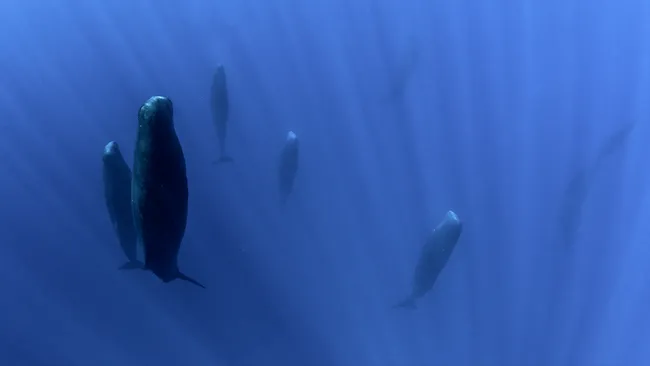Sleep, they can’t just close their eyes and drift away for the night, as they need to intermediately surface for air. Nor can they float at the water’s surface and slumber, because that exposes them to predators and heat loss. So how do marine mammals get any shut-eye without putting themselves at risk? Dolphins are the best-studied marine mammals capable of this style of sleeping. Brain scans on captive dolphins show that while one hemisphere is in slow-wave, deep sleep, the other hemisphere is alert, allowing the animals to literally sleep with one eye open. This style of sleeping is common in cetaceans — the group of mammals that includes dolphins, whales and porpoises — but it’s not unique to them. Many bird species are known to use unihemispheric sleep, often allowing them to doze while flying For instance, in a flock of birds, many of the ones on the outside of the group keep the eye facing away from the flock open, to watch for predators. But dolphins do the opposite: While sleeping, they tend to keep the eye open that faces the rest of the pod, likely to avoid becoming separated. While sleeping, whole pods of whales can be seen nose-up, just below the ocean’s surface. During this time, the animals are completely unresponsive, which suggests they are in a form of deep sleep. However, the animals can rest only about 20 minutes underwater before they need to come back up for air. Once the whale has caught its breath, it slinks below the surface for more rest, and may continue this behavior for up to 3.5 hours.
Thank you for reading this post, don't forget to subscribe!
Wednesday, October 1, 2025


